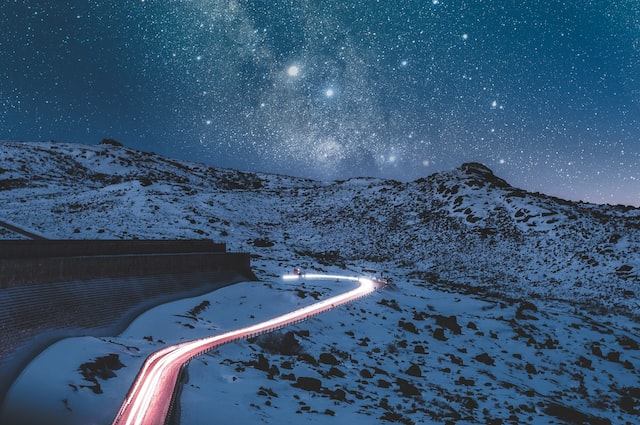ライフハックとしてではなく、英語学習にも極めて有用なのが、著名人が10分程度のプレゼンを行うTEDです。
TED Talksとは、あらゆる分野のエキスパートたちによるプレゼンテーションを無料で視聴できる動画配信サービスのことです。10年ほど前にサービスが開始されてから、政治、心理学、経済、日常生活などの幅広いコンテンツが視聴できることから人気を集めています。
RareJob English Lab
TEDは4000を超える膨大な数の動画があります。しかし慣れないうちは、動画の探し方や視聴のコツが分かりませんよね。この記事では、数多くのTEDを見てきた管理人(塩@saltandshio)が、心を揺さぶられたトークをあらすじと一緒にご紹介します。
ビジネス英会話を効率よく身につけたい方におすすめスクール
シェーン英会話
シェーンは1977年の創業以来、ネイティブ講師が英語を英語で教える「直接教授法」を採用しています。首都圏におけるスクール拠点数は、ネイティブ講師の英会話スクールでNo.1。駅から近いスクールが多いので通いやすく時間を有効に使えます。
スピークバディ パーソナルコーチング
1日1時間の短期集中トレーニングで、あなたの英語力向上をコーチが全力でサポートします。あなたの英語の世界が、劇的に変わります。
ベン・ソーンダーズ: なぜ家を出なきゃいけないの?
あなたにも外の世界を見てほしい。なぜなら、心地よい幸せばかりではありませんが、人生を底から満足させる冒険があるからです。ソーンダーズの次の挑戦は?史上初 南極大陸の端から南極点までを徒歩で往復することです(約10分半)。
[PR]わかってくれないを解決!家族や仕事など相手に合った「伝え方」のコツ!わざわざ家を出る必要はあるのか?という質問の答え
冒険家であるベン・ソーンダーズはある日のインタビューで、『便利な時代にわざわざ家を出る必要があるのか?』という質問を受けました。彼はその質問に対して、ジョージ・リー・マロリーの言葉を引用します。
即答です。何のためでもありません。
And my answer must at once be, it is no use.
ジョージ・リー・マロリーはイギリスの登山家で、「そこに山があるから」という名言を残したとされています。エベレスト山頂を目指しましたが、三度目の挑戦で雪山の中に消えていった人です。彼がエベレストに登った最初の人間かもしれないといわれていますが、いまだに謎とされています。その最期も長年にわたって謎に包まれていましたが、1999年5月1日に国際探索隊によって発見されています。
ジョージ・リー・マロリーは、登山家としてエベレストに登りましたが、「そこにメリットはほとんどない」と言っています。しかし、上へ上へと登る厳しさは人生の厳しさそのものであり、それが理解出来なければ山に登る理由なんて見当たらないという言葉も残しています。
[PR]検定試験合格者累計140万人!スマホ対応☆国家資格ほか資格取得ならSMART合格対策講座冒険に出ると喜びにあふれた体験ができる
では、なぜジョージ・リー・マロリーは山に登り続けたのでしょうか。そのこたえは、この言葉で知ることが出来るでしょう。
この冒険で手に入るのは最高の喜び、人生を満たす喜びです。私たちは稼いだり食べるために生きているのではない。これらは人生を楽しむための手段でしかない。人生は楽しむもの楽しむためにあるのです。
What we get from this adventure is just sheer joy, and joy, after all, is the end of life. We don’t live to eat and make money.We eat and make money to be able to enjoy life. That is what life means, and that is what life is for.
しかし、ベン・ソーンダーズはこの言葉に異を唱えます。彼は2004年の春に、たった独りで誰の援助なしに北極海を横断しようと決めて冒険の旅に出ました。この旅に対して、彼はワクワクしていたのでしょうか。期待に胸を弾ませていたのでしょうか。じつは、彼はこの旅をまったく楽しみに思っていませんでした。むしろベン・ソーンダーズは出発地点に立った時点で、完全にビビっていたのです。
さらに、この冒険を思い立った自分の正気を疑います。なぜなら、多くの専門家にも不可能だと言われて、母親ですら彼の挑戦をなかなか受け入れてくれなかったからです。結論から言うと、ベン・ソーンダーズは10週間(72日間)かけて横断しました。史上最悪の悪天候の中、180kgの荷物をソリで引いて独りで歩ききったのです。
その瞬間、彼の世界が大きく変わりました。
[PR]まずは無料カウンセリング”続けるため”の オンライン英語コーチ「スピークバディ パーソナルコーチング」楽しいことはないけれど素敵なことはある
過酷な環境ではありましたが、二度と会えない景色を見ながらの旅は素敵だったとベン・ソーンダーズは語ります。
私が思うには、間接的に見たり考えたりするより自分で行動する、つまり 何かを体験し、従事し、挑戦したほうが人生に充実感が湧き、思う存分に 人生を楽しめるでしょう。
だが一つ忠告があります。私の経験から言うと、人類の限界ギリギリへの挑戦、この味は知ってしまうと癖になる。
And it seems to me, therefore, that the doing, you know, to try to experience, to engage, to endeavor, rather than to watch and to wonder, that’s where the real meat of life is to be found, the juice that we can suck out of our hours and days.
And I would add a cautionary note here, however. In my experience, there is something addictive about tasting life at the very edge of what’s humanly possible.
あなたのまわりにもいませんか?週末になると山に登る人、マラソンをする人、自転車に乗る人。傍から見ていると、なぜそんなことをしているのか不思議に思います。ですが彼らもまた、苦しい思いをした先の景色を知ってしまい、ハマってしまった人たちなのです。
なにかに深くハマってしまうと、お金も出て行きます。時間も奪われます。しかし、なにかに挑戦している時、ぼんやりとテレビやインターネットを見ているよりも、心は充実感で満たされているはずです。
[PR]無料体験レッスン実施中!全国208校、創業40年の老舗英会話スクール【シェーン英会話】挑戦によって得られるもの
挑戦した先に、なにがあるのでしょうか。もし成功が待ち構えているのであれば、マラソン大会に参加して完走した選手は全員が成功者です。それも成功のひとつの形ですが、ベン・ソーンダーズの考えは少し違います。
人間には山からの挑戦に立ち向かう ”何か”があるとマロリーは言うが、その”何か”は挑戦することそのもの、特に私たち人類を待ち構えているような 誰も成功したことのない大挑戦に立ち向かうこと、その行動にあるのではないかと私は考えます。
Mallory postulated that there is something in man that responds to the challenge of the mountain, and I wonder if that’s the case whether there’s something in the challenge itself, in the endeavor, and particularly in the big, unfinished, chunky challenges that face humanity that call out to us, and in my experience that’s certainly the case.
さまざまな冒険家が、それぞれの頂点に向かって旅に出ます。苦労してたどり着いたのに、既に先に誰かが着いていたということもあります。大きな失望もあるでしょう。悔しくて夜も眠れないというときもあるかもしれません。
しかし、そんな気持ちになるまで真剣に挑戦したという事実を忘れてはいけません。結果が伴わなければ意味が無い、というわけでは決してないのです。挑戦することを決めて、実際に行動に移すことがまず素晴らしいのです。
納得する結果を出せば達成感を感じることが出来るでしょう。もし結果が出なくても、そこから学んだことは、なにもしなかったときよりも多くの心の財産が残るはずです。
[PR]無料会員登録。あなたにぴったりのカウンセラーに出会える! ココナラの【心のお悩み相談】まとめ:未知の世界へ踏み出そう
ベン・ソーンダーズ自身、まさか自分が探検家になるとは思っていませんでした。だからこそ、わたしたちに語り掛けます。いま、ほとんどの人が探索や冒険をするところはもうないと思っています。現代は座ったままで多くの事を知ることが出来ます。しかし、“知る”ことと“わかる”ことはイコールではありません。
誰にだって、人生で乗り越えるべき壁や、たどり着くべき目標があります。 比喩的な話ではありますが、勇気を出して家の外に出る回数を少し増やすだけで、なにか得ることがあるはずです。
In life, we all have tempests to ride and poles to walk to, and I think metaphorically speaking, at least, we could all benefit from getting outside the house a little more often, if only we could sum up the courage.
真の感激は、快適ないつもの生活から離れて、未知の世界に踏み込んでこそ手に入るもの。さあ、ドアを開けて外の世界を探索してみましょう。未体験ゾーンがあなたを待っています。
英語全文
I essentially drag sledges for a living, so it doesn’t take an awful lot to flummox me intellectually, but I’m going to read this question from an interview earlier this year: “Philosophically, does the constant supply of information steal our ability to imagine or replace our dreams of achieving? After all, if it is being done somewhere by someone, and we can participate virtually, then why bother leaving the house?”
<全文を読む>▼クリック▼
The pithiest answer to the question “why?” that’s been dogging me for the last 12 years was credited certainly to this chap, the rakish-looking gentleman standing at the back, second from the left, George Lee Mallory. Many of you will know his name. In 1924 he was last seen disappearing into the clouds near the summit of Mt. Everest. He may or may not have been the first person to climb Everest, more than 30 years before Edmund Hillary. No one knows if he got to the top. It’s still a mystery. But he was credited with coining the phrase, “Because it’s there.” Now I’m not actually sure that he did say that. There’s very little evidence to suggest it, but what he did say is actually far nicer, and again, I’ve printed this. I’m going to read it out.
“The first question which you will ask and which I must try to answer is this: What is the use of climbing Mt. Everest? And my answer must at once be, it is no use. There is not the slightest prospect of any gain whatsoever. Oh, we may learn a little about the behavior of the human body at high altitudes, and possibly medical men may turn our observation to some account for the purposes of aviation, but otherwise nothing will come of it. We shall not bring back a single bit of gold or silver, and not a gem, nor any coal or iron. We shall not find a single foot of earth that can be planted with crops to raise food. So it is no use. If you can not understand that there is something in man which responds to the challenge of this mountain and goes out to meet it, that the struggle is the struggle of life itself upward and forever upward, then you won’t see why we go. What we get from this adventure is just sheer joy, and joy, after all, is the end of life. We don’t live to eat and make money. We eat and make money to be able to enjoy life. That is what life means, and that is what life is for.”
Mallory’s argument that leaving the house, embarking on these grand adventures is joyful and fun, however, doesn’t tally that neatly with my own experience. The furthest I’ve ever got away from my front door was in the spring of 2004. I still don’t know exactly what came over me, but my plan was to make a solo and unsupported crossing of the Arctic Ocean. I planned essentially to walk from the north coast of Russia to the North Pole, and then to carry on to the north coast of Canada. No one had ever done this. I was 26 at the time. A lot of experts were saying it was impossible, and my mum certainly wasn’t very keen on the idea.
The journey from a small weather station on the north coast of Siberia up to my final starting point, the edge of the pack ice, the coast of the Arctic Ocean, took about five hours, and if anyone watched fearless Felix Baumgartner going up, rather than just coming down, you’ll appreciate the sense of apprehension, as I sat in a helicopter thundering north, and the sense, I think if anything, of impending doom. I sat there wondering what on Earth I had gotten myself into. There was a bit of fun, a bit of joy. I was 26. I remember sitting there looking down at my sledge. I had my skis ready to go, I had a satellite phone, a pump-action shotgun in case I was attacked by a polar bear. I remember looking out of the window and seeing the second helicopter. We were both thundering through this incredible Siberian dawn, and part of me felt a bit like a cross between Jason Bourne and Wilfred Thesiger. Part of me felt quite proud of myself, but mostly I was just utterly terrified.
And that journey lasted 10 weeks,72 days. I didn’t see anyone else. We took this photo next to the helicopter. Beyond that, I didn’t see anyone for 10 weeks. The North Pole is slap bang in the middle of the sea, so I’m traveling over the frozen surface of the Arctic Ocean. NASA described conditions that year as the worst since records began. I was dragging 180 kilos of food and fuel and supplies, about 400 pounds. The average temperature for the 10 weeks was minus 35. Minus 50 was the coldest. So again, there wasn’t an awful lot of joy or fun to be had.
One of the magical things about this journey, however, is that because I’m walking over the sea, over this floating, drifting, shifting crust of ice that’s floating on top of the Arctic Ocean is it’s an environment that’s in a constant state of flux. The ice is always moving, breaking up, drifting around, refreezing, so the scenery that I saw for nearly 3 months was unique to me. No one else will ever, could ever, possibly see the views, the vistas, that I saw for 10 weeks. And that, I guess, is probably the finest argument for leaving the house. I can try to tell you what it was like, but you’ll never know what it was like, and the more I try to explain that I felt lonely, I was the only human being in 5.4 million square-miles, it was cold, nearly minus 75 with windchill on a bad day, the more words fall short, and I’m unable to do it justice. And it seems to me, therefore, that the doing, you know, to try to experience, to engage, to endeavor, rather than to watch and to wonder, that’s where the real meat of life is to be found, the juice that we can suck out of our hours and days. And I would add a cautionary note here, however. In my experience, there is something addictive about tasting life at the very edge of what’s humanly possible. Now I don’t just mean in the field of daft macho Edwardian style derring-do, but also in the fields of pancreatic cancer, there is something addictive about this, and in my case, I think polar expeditions are perhaps not that far removed from having a crack habit. I can’t explain quite how good it is until you’ve tried it, but it has the capacity to burn up all the money I can get my hands on, to ruin every relationship I’ve ever had, so be careful what you wish for.
Mallory postulated that there is something in man that responds to the challenge of the mountain, and I wonder if that’s the case whether there’s something in the challenge itself, in the endeavor, and particularly in the big, unfinished, chunky challenges that face humanity that call out to us, and in my experience that’s certainly the case. There is one unfinished challenge that’s been calling out to me for most of my adult life.
Many of you will know the story. This is a photo of Captain Scott and his team. Scott set out just over a hundred years ago to try to become the first person to reach the South Pole. No one knew what was there. It was utterly unmapped at the time. We knew more about the surface of the moon than we did about the heart of Antarctica. Scott, as many of you will know, was beaten to it by Roald Amundsen and his Norwegian team, who used dogs and dogsleds. Scott’s team were on foot, all five of them wearing harnesses and dragging around sledges, and they arrived at the pole to find the Norwegian flag already there, I’d imagine pretty bitter and demoralized. All five of them turned and started walking back to the coast and all five died on that return journey.
There is a sort of misconception nowadays that it’s all been done in the fields of exploration and adventure. When I talk about Antarctica, people often say, “Hasn’t, you know, that’s interesting, hasn’t that Blue Peter presenter just done it on a bike?” Or, “That’s nice. You know, my grandmother’s going on a cruise to Antarctica next year. You know. Is there a chance you’ll see her there?”
But Scott’s journey remains unfinished. No one has ever walked from the very coast of Antarctica to the South Pole and back again. It is, arguably, the most audacious endeavor of that Edwardian golden age of exploration, and it seemed to me high time, given everything we have figured out in the century since from scurvy to solar panels, that it was high time someone had a go at finishing the job. So that’s precisely what I’m setting out to do.
This time next year, in October, I’m leading a team of three. It will take us about four months to make this return journey. That’s the scale. The red line is obviously halfway to the pole. We have to turn around and come back again. I’m well aware of the irony of telling you that we will be blogging and tweeting. You’ll be able to live vicariously and virtually through this journey in a way that no one has ever before. And it’ll also be a four-month chance for me to finally come up with a pithy answer to the question, “Why?”
And our lives today are safer and more comfortable than they have ever been. There certainly isn’t much call for explorers nowadays. My career advisor at school never mentioned it as an option. If I wanted to know, for example, how many stars were in the Milky Way, how old those giant heads on Easter Island were, most of you could find that out right now without even standing up. And yet, if I’ve learned anything in nearly 12 years now of dragging heavy things around cold places, it is that true, real inspiration and growth only comes from adversity and from challenge, from stepping away from what’s comfortable and familiar and stepping out into the unknown. In life, we all have tempests to ride and poles to walk to, and I think metaphorically speaking, at least, we could all benefit from getting outside the house a little more often, if only we could sum up the courage. I certainly would implore you to open the door just a little bit and take a look at what’s outside. Thank you very much.
<閉じる>
\ ほかにも気になるトークが満載! /








